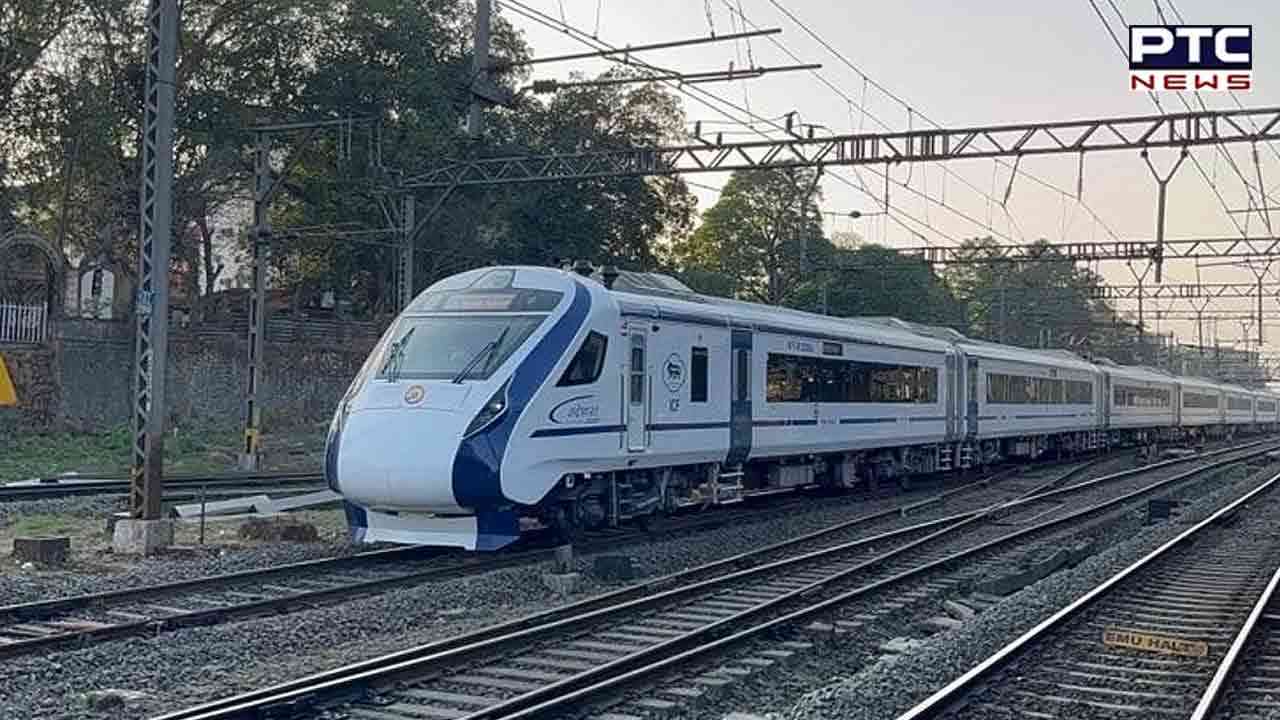- April 7, 2025
- Updated 2:22 am
Average speed of Vande Bharat trains down to 76 kmph from 84.48 kmph in three years, says RTI
PTC Web Desk: The average speed of Vande Bharat trains has decreased from 84.48 km/h in 2020-21 to 76.25 km/h in 2023-24, according to a recent RTI response from the railway ministry. This decline has been attributed to ongoing infrastructural projects and challenging terrain, among other factors.
Railway officials explained that numerous trains, including Vande Bharat, are operating under cautionary speeds due to significant infrastructural works across various routes. An official said, “Many Vande Bharat trains have been launched in difficult terrain areas where there are speed restrictions due to geographical reasons or extreme weather conditions.”
Citing the Vande Bharat train between Mumbai CSMT and Madgaon as an example, a Central Railway Zone official highlighted the difficulties posed by the ‘ghat’ section of the Konkan railway area. “Most of the Konkan railway area is ‘ghat’ section where trains pass through low-height mountain ranges. It is a difficult terrain area where increasing speed could compromise safety,” the official stated. He added that during the monsoon season, the maximum speed for all trains is limited to 75 km/h due to safety concerns.
Chandra Shekhar Gaur, an RTI applicant from Madhya Pradesh, provided data indicating the average speed of Vande Bharat trains was 84.48 km/h in 2020-21, which decreased to 81.38 km/h in 2022-23, and further dropped to 76.25 km/h in 2023-24.
Launched on February 15, 2019, the Vande Bharat is a semi-high-speed train capable of reaching a maximum speed of 160 km/h. However, it generally operates at speeds not exceeding 130 km/h, except on the Delhi-Agra route where the track conditions permit the higher speed. A Railways official explained, “Certain segments of tracks between Delhi and Agra were developed in 2016 for India’s first semi-high-speed train, Gatiman Express, to run at 160 km/h. Only on those segments can Vande Bharat also run at 160 km/h. Elsewhere, its maximum speed is either 130 or lower.”

The official added that the Railways is actively upgrading tracks to meet the speed requirements of the Vande Bharat trains, which necessitates speed restrictions during the upgrade process. “Once these upgrades are complete, we will have trains capable of reaching up to 250 km/h,” the official asserted.
Despite these efforts, some routes are performing below the overall average speed of Vande Bharat trains. For instance, the Dehradun-Anand Vihar route averages 63.42 km/h, Patna-Ranchi averages 62.9 km/h, and Coimbatore-Bangalore Cantt averages 58.11 km/h.
An expert involved in track construction, who requested anonymity, criticised the Railways’ progress in updating infrastructure for semi-high-speed trains. “It has been more than five years since the first Vande Bharat was launched, yet the Railways has not replaced tracks on any route to allow the train to run at its maximum operating speed of 160 km/h. The argument that ongoing infrastructure work restricts speed is valid, but it also highlights a failure to lay suitable tracks within this period,” he added.
Recent Posts
- Crown of goddess Kali, gifted by PM Modi, stolen from temple in Bangladesh
- Hezbollah leader survives assassination attempt amid Israeli strikes that kill 22 in Beirut
- ਕ੍ਰਿਕਟ ਦੇ ਬਦਲੇ ਨਿਯਮ, ਹੁਣ ਇਸ ਕੇਸ ‘ਚ ਦੁਬਾਰਾ ਨਹੀਂ ਮਿਲੇਗੀ ਬੈਟਿੰਗ, ਮੰਨਿਆ ਜਾਵੇਗਾ
- ਸਚਿਨ ਤੇਂਦੁਲਕਰ ਦੇ ਬਰਾਬਰ ਪਹੁੰਚੇ ਜੋ ਰੂਟ, ਪਰ ਵਿਰਾਟ ਦੇ ਇਸ ਰਿਕਾਰਡ ਤੋਂ ਅਜੇ ਵੀ ਦੂਰ
- Ratan tata death: ਸਿਰਫ ਵੋਲਟਾਸ ਹੀ ਨਹੀਂ, ਸਵੇਰ ਤੋਂ ਰਾਤ ਤੱਕ ਤੁਹਾਡਾ ਕੰਮ ਟਾਟਾ ਦੇ ਬਿਨਾਂ ਨਹੀਂ ਚੱਲ ਸਕਦਾ
